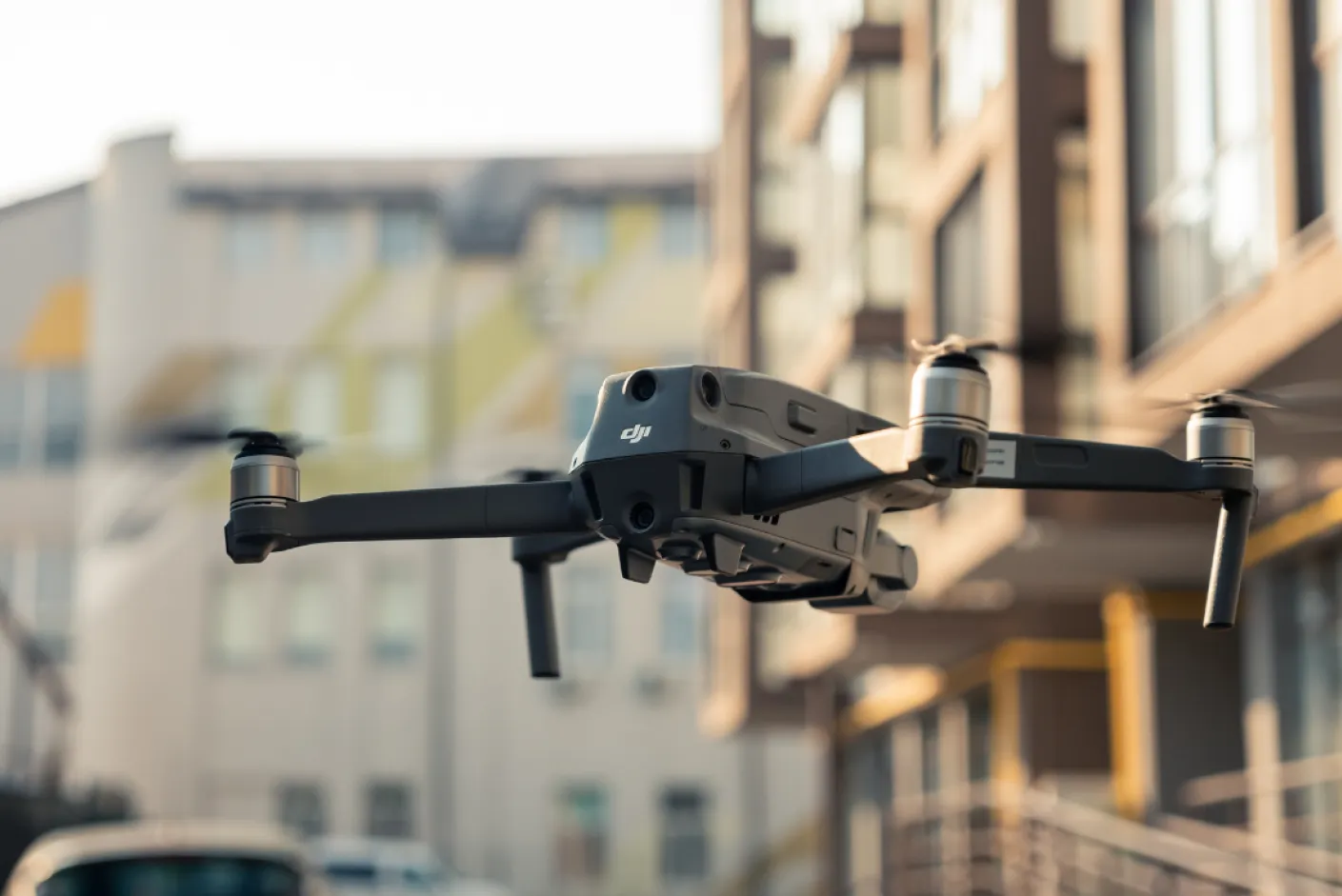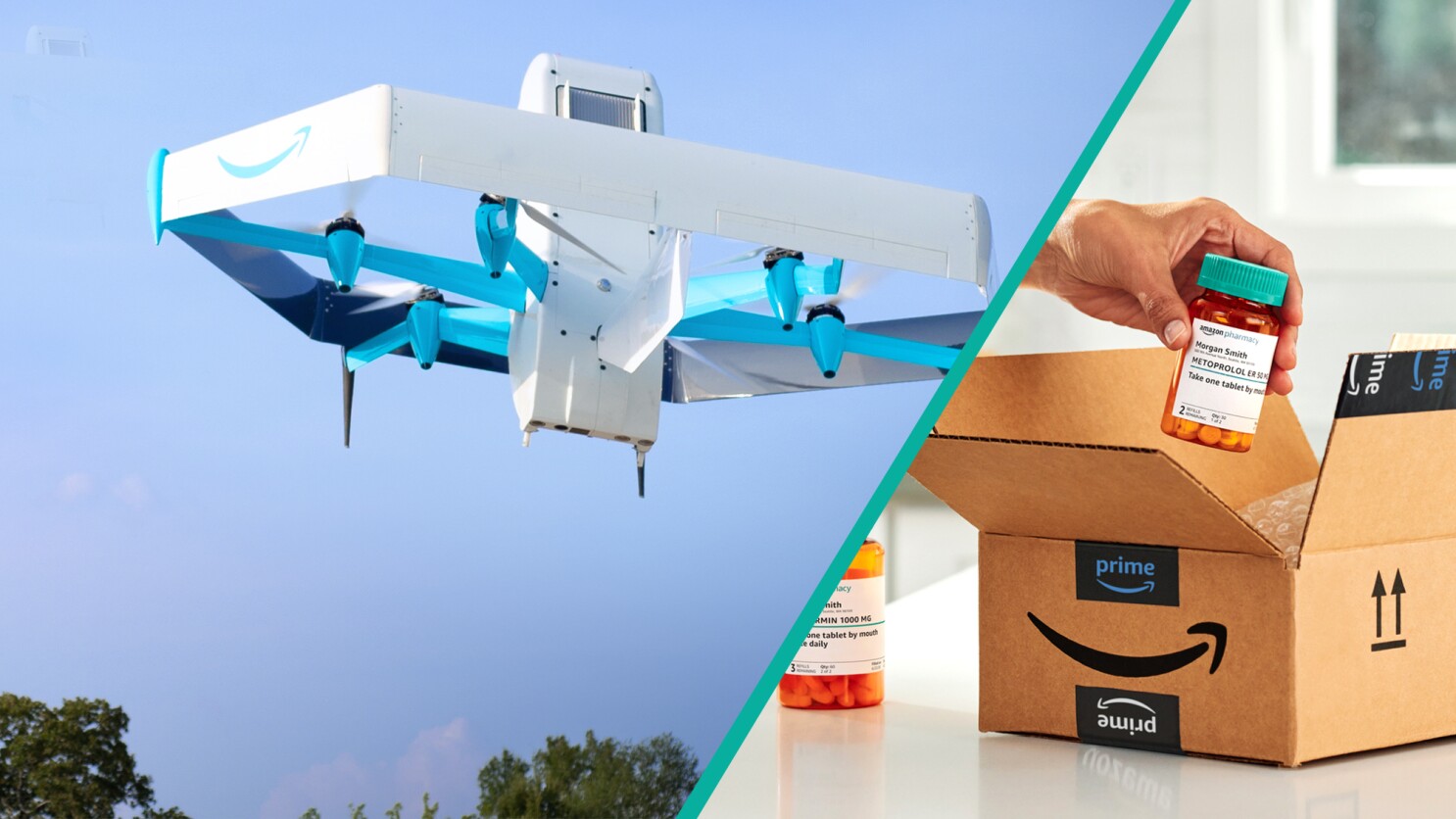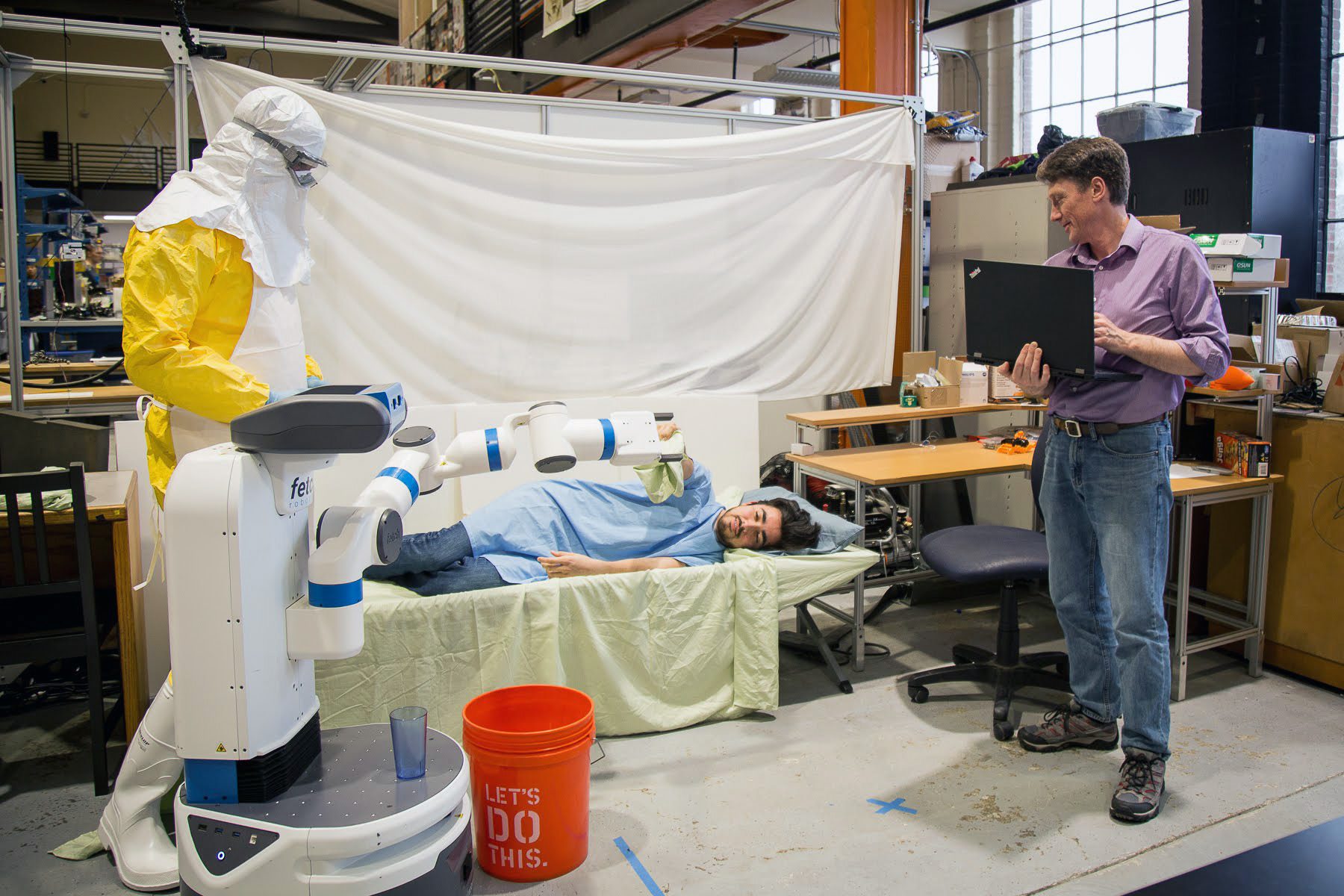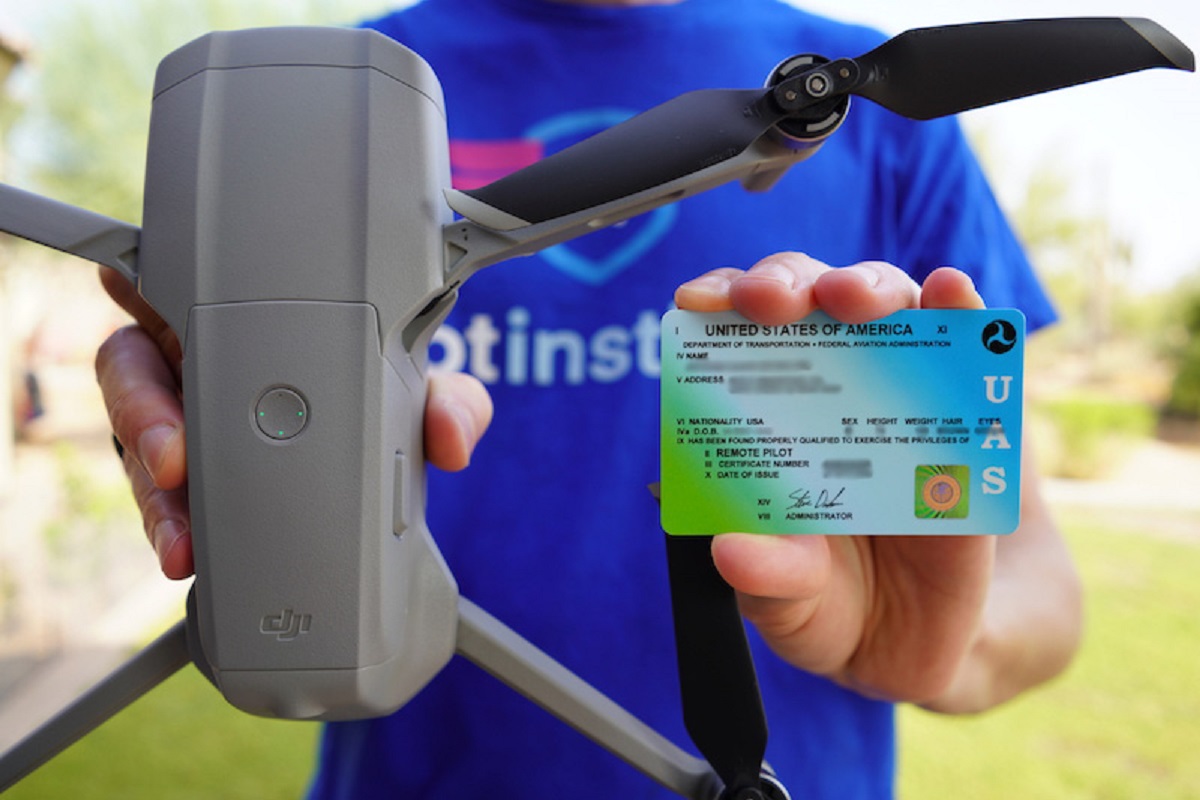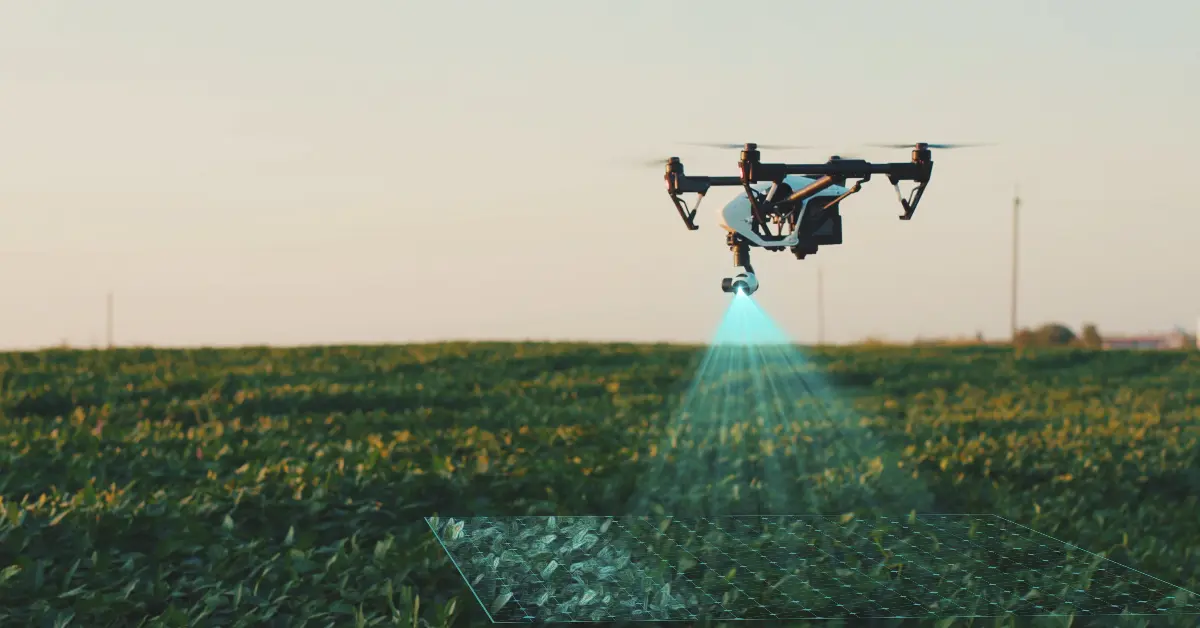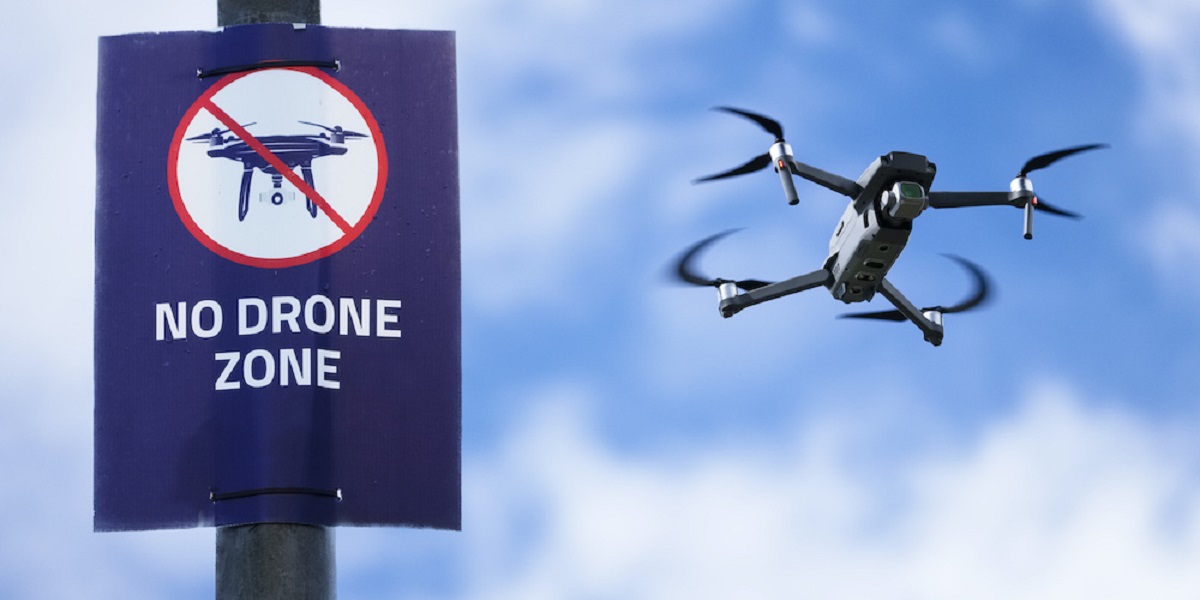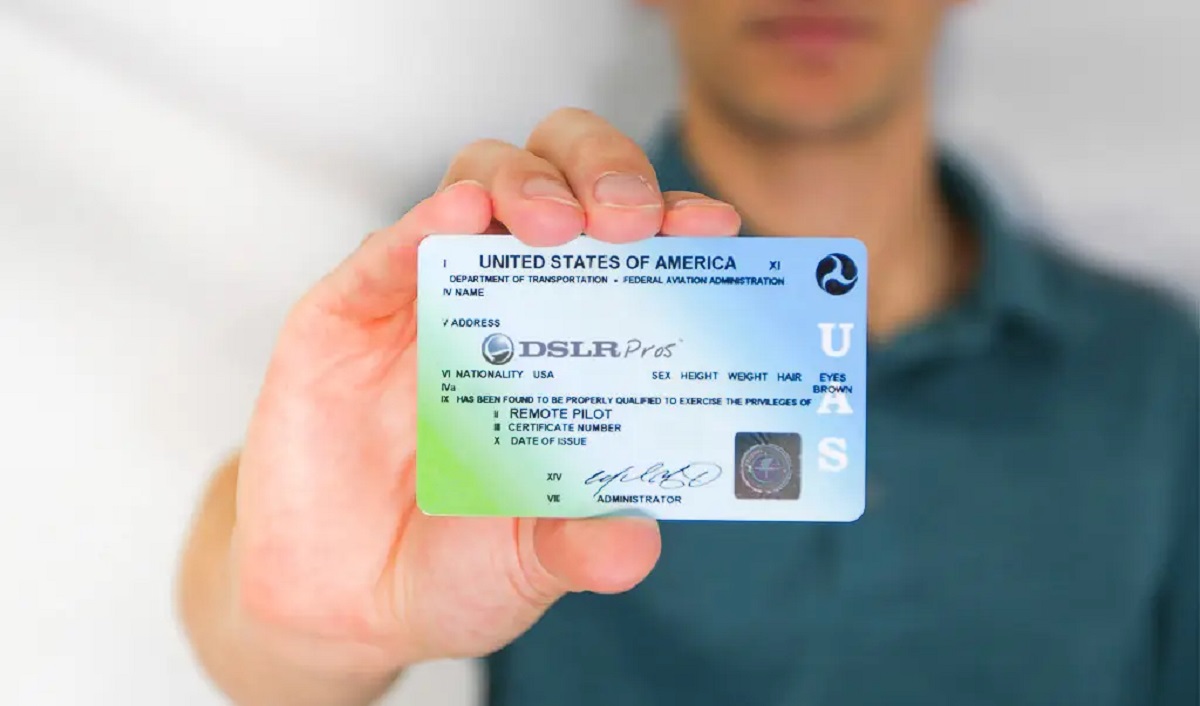Introduction
Drones, also known as unmanned aerial vehicles (UAVs), have become increasingly popular in recent years. They offer endless possibilities, from capturing stunning aerial photography to delivering packages to remote locations. However, operating a drone requires more than just technical know-how and flying skills. In order to comply with regulations and ensure safety, it is important to obtain a drone license.
A drone license serves as a legal certification that allows individuals to operate drones in a responsible and professional manner. Whether you are a hobbyist or a commercial drone pilot, getting a license demonstrates your commitment to following the rules, protecting the privacy of others, and maintaining the safety of the airspace.
In the United States, the Federal Aviation Administration (FAA) is the governing body responsible for regulating drone operations. They have implemented guidelines and requirements that drone pilots must adhere to in order to operate legally. Additionally, each state may also have its own specific regulations regarding drone licensing.
This article will focus on obtaining a drone license in Texas, one of the most drone-friendly states in the US. We will walk you through the essential steps to become a certified drone pilot, ensuring that you meet all the necessary requirements set forth by the FAA and the state of Texas.
The Importance of Getting a Drone License
Obtaining a drone license is not just a legal requirement; it also demonstrates professionalism, responsibility, and a commitment to safety. Here are a few key reasons why getting a drone license is crucial:
- Compliance with Regulations: The FAA has established regulations to ensure the safe operation of drones. By obtaining a license, you are demonstrating your understanding and adherence to these regulations. This helps to protect the integrity of the airspace and ensures the safety of people and property on the ground.
- Public Safety: Operating a drone without proper certification can pose risks to public safety. With a license, you have undergone training and demonstrated proficiency in drone operation, navigation, and emergency procedures. This minimizes the likelihood of accidents or incidents that could harm people or property.
- Commercial Opportunities: For those looking to use drones for commercial purposes, such as aerial photography, inspections, or delivery services, having a license is essential. Many clients and businesses require proof of certification before hiring drone operators, as it provides peace of mind and ensures professionalism.
- Insurance Coverage: In some cases, insurance policies may require drone pilots to have a license in order to be eligible for coverage. Without a license, you may not have the protection you need in the event of an accident or damage caused by your drone.
- Improved Skills and Knowledge: The process of obtaining a drone license involves studying aeronautical knowledge, airspace regulations, and safe operating practices. This knowledge not only ensures compliance but also enhances your skills as a drone pilot, allowing you to operate more proficiently and confidently.
By obtaining a drone license, you are not only meeting legal requirements but also setting yourself apart as a responsible and professional drone pilot. It demonstrates your commitment to safety, compliance, and continuous learning in the ever-evolving field of drone technology.
Understanding the Federal Aviation Administration (FAA) Regulations
The Federal Aviation Administration (FAA) is the governing body responsible for regulating drone operations in the United States. They have implemented regulations that are designed to ensure the safe and responsible use of drones. Understanding these regulations is essential for every drone pilot. Here are key points to consider:
- Part 107 Regulations: The FAA’s Part 107 regulations are specifically tailored for small unmanned aircraft systems (sUAS) weighing less than 55 pounds. These regulations outline the requirements for operating drones for commercial purposes. It includes rules regarding pilot certification, airspace restrictions, operational limitations, and aircraft maintenance.
- Pilot Certification: To operate a drone for commercial purposes, drone pilots must obtain a Remote Pilot Certificate issued by the FAA. This requires passing an aeronautical knowledge test, which covers topics such as airspace classification, weather patterns, FAA regulations, and emergency procedures.
- Airspace Restrictions: The FAA has designated different classes of airspace, each with its own restrictions and requirements for drone operation. It is important for drone pilots to understand the airspace they are operating in and comply with any restrictions in place. This helps ensure the safety of manned aircraft and other airspace users.
- Operational Limitations: The FAA has set operational limitations for drone pilots, including maximum altitude (400 feet above ground level) and maximum distance (within visual line of sight). Understanding these limitations is crucial to operate drones safely and responsibly.
- Special Permissions: In certain circumstances, such as flying at night or operating in controlled airspace, drone pilots may need to obtain special permissions or waivers from the FAA. These are granted on a case-by-case basis and require additional documentation and justification.
By familiarizing yourself with the FAA regulations, you can ensure that you operate your drone legally and responsibly. It is important to stay updated on any changes or updates to the regulations to maintain compliance and safety. The FAA website provides comprehensive resources and information to help drone pilots understand and navigate these regulations.
Steps to Obtain a Drone License in Texas
Obtaining a drone license in Texas involves following a series of steps to ensure compliance with both federal and state regulations. Here is a breakdown of the essential steps:
- Step 1: Determine the Type of Drone License Needed: The type of drone license you need will depend on whether you plan to operate drones for recreational or commercial purposes. Recreational drone pilots do not require a license but must still follow FAA guidelines. Commercial drone pilots must obtain a Remote Pilot Certificate.
- Step 2: Meet Age and Citizenship Requirements: To obtain a Remote Pilot Certificate, you must be at least 16 years old and legally allowed to work in the United States.
- Step 3: Register Your Drone with the FAA: All drones over 0.55 pounds must be registered with the FAA. This can be done online through the FAA’s drone registration portal. The registration fee is minimal and valid for three years.
- Step 4: Study and Prepare for the Aeronautical Knowledge Test: Aspiring commercial drone pilots must study and prepare for the FAA’s aeronautical knowledge test. This exam covers a range of topics, including regulations, airspace, weather, and drone operation. Online study materials and practice tests are available to help you prepare.
- Step 5: Schedule and Pass the Aeronautical Knowledge Test: Once you feel adequately prepared, you can schedule your aeronautical knowledge test at an FAA-approved testing center. The test consists of 60 multiple-choice questions, and a passing score of 70% or higher is required.
- Step 6: Complete the TSA Background Check: After passing the aeronautical knowledge test, you must complete a Transportation Security Administration (TSA) background check. This process ensures that you do not pose a security risk and may take a few weeks to complete.
- Step 7: Submit Application for Remote Pilot Certificate: Once the TSA background check is complete, you can submit an application for a Remote Pilot Certificate through the FAA’s Integrated Airman Certification and Rating Application (IACRA) system. You will need to provide your test results, identification documents, and other relevant information.
- Step 8: Maintain Your Drone License: To maintain your drone license, you must adhere to all FAA regulations, including re-registering your drone every three years and staying updated on any changes to the rules or operational limitations.
By following these steps, you can obtain a drone license in Texas and operate drones legally and responsibly. Remember to always stay informed about any updates to regulations to ensure ongoing compliance.
Step 1: Determine the Type of Drone License Needed
Before embarking on the process of obtaining a drone license in Texas, it is crucial to determine the type of license that suits your needs. The type of license will depend on whether you plan to operate drones for recreational or commercial purposes.
Recreational Drone Pilots: If you intend to fly your drone purely for recreational purposes, a drone license is not required. However, it is important to note that you must still follow the guidelines and regulations set forth by the Federal Aviation Administration (FAA). These guidelines include flying your drone within visual line of sight, staying below 400 feet above ground level, and avoiding restricted airspace, such as airports and national parks.
Commercial Drone Pilots: If you plan to use your drone for any form of commercial activity, such as aerial photography, videography, or providing services in exchange for compensation, you will need to obtain a Remote Pilot Certificate. This certificate demonstrates that you have passed the FAA’s aeronautical knowledge test and are qualified to operate drones in a commercial capacity.
It is important to carefully consider your intentions as a drone operator to determine the appropriate license. If you anticipate any commercial usage in the future, obtaining a Remote Pilot Certificate is advisable, as it opens up more opportunities and ensures compliance with regulations.
Regardless of the type of license you will be pursuing, it is always recommended to familiarize yourself with the FAA regulations applicable to drone operations. This will ensure that you are aware of any restrictions or limitations that may impact your flights.
By determining the type of drone license needed at the outset, you can set a clear path toward achieving your goals as a drone pilot and ensure that you meet all the necessary requirements as established by the FAA and the state of Texas.
Step 2: Meet the Age and Citizenship Requirements
When pursuing a drone license in Texas, it is essential to meet the age and citizenship requirements set by the Federal Aviation Administration (FAA) to ensure eligibility for certification.
The FAA stipulates that you must be at least 16 years old to qualify for a Remote Pilot Certificate. This requirement ensures that individuals seeking certification have a certain level of maturity and responsibility necessary for safely operating drones.
In addition to the age requirement, you must also be legally allowed to work in the United States. This means being a U.S. citizen, a permanent resident, or having the necessary authorization to work in the country.
It is important to note that if you do not meet the age and citizenship criteria, you may still be able to operate a drone for recreational purposes. However, engaging in commercial activities would require you to meet these requirements and obtain the proper certification.
Before proceeding with the application process for a Remote Pilot Certificate, take the time to verify that you fulfill the age and citizenship requirements established by the FAA. Ensuring your eligibility from the outset will save you time and avoid potential complications during the certification process.
If you are under the age of 16 or are not yet eligible to work in the United States, consider using this time to familiarize yourself with the FAA guidelines and prepare for future drone operations. As you approach the age and citizenship requirements, you can then pursue the necessary steps to obtain your drone license in Texas.
By meeting the age and citizenship requirements, you demonstrate your commitment to responsible drone operation and compliance with the regulations set forth by the FAA. It is an important step toward becoming a certified drone pilot and engaging in drone activities within the state of Texas.
Step 3: Register Your Drone with the FAA
Registering your drone with the Federal Aviation Administration (FAA) is a crucial step in the process of obtaining a drone license in Texas. The FAA requires the registration of all drones that weigh more than 0.55 pounds (250 grams) for recreational or commercial purposes.
The registration process is relatively simple and can be done online through the FAA’s drone registration portal. Here are the key steps to register your drone:
- Gather the Required Information: Before starting the registration process, make sure you have the necessary information readily available. This includes your email address, physical address, and the make and model of your drone.
- Visit the FAA Drone Registration Portal: Access the FAA’s drone registration portal through their official website. Create an account or log in if you already have an existing account.
- Complete the Registration Form: Fill out the online registration form with accurate and up-to-date information. Provide all required details, including your personal information and the specifics of your drone.
- Pay the Registration Fee: Once you have completed the registration form, you will be prompted to pay a small registration fee. The fee covers the drone’s registration for a period of three years.
- Receive Your FAA Registration Number: After successfully completing the registration process and payment, you will receive a unique FAA registration number. This number must be affixed to your drone in a location that is easily accessible for inspection.
It is important to note that the FAA registration process must be completed before operating your drone. Failure to register your drone can result in fines and other legal consequences.
By registering your drone with the FAA, you demonstrate responsible ownership and compliance with federal regulations. It allows for easier identification in the event of loss or illegal operation and helps maintain the safety and integrity of the national airspace.
Ensure that you keep a copy of your registration certificate and any related documentation as proof of compliance. This will be necessary if you are ever asked to provide verification of your drone’s registration status.
By completing the registration process, you are one step closer to becoming a licensed drone pilot in Texas and can proceed with the remaining requirements to obtain your drone license.
Step 4: Study and Prepare for the Aeronautical Knowledge Test
One of the essential steps in obtaining a drone license in Texas is to study and prepare for the aeronautical knowledge test conducted by the Federal Aviation Administration (FAA). This test assesses your understanding of drone operation, airspace regulations, weather patterns, and other crucial factors related to safe and responsible drone piloting.
To ensure success in the aeronautical knowledge test, consider the following steps:
- Access Study Materials: The FAA provides comprehensive study materials, including the Remote Pilot – Small Unmanned Aircraft Systems Study Guide. This guide covers the topics that will be tested in the exam and serves as a valuable resource for test preparation.
- Take Online Courses: Numerous online courses and training programs are available to help you learn the required information and prepare for the exam. These courses often include video lessons, practice quizzes, and study guides that can enhance your understanding of drone operations and regulations.
- Utilize Practice Tests: The FAA provides practice tests that closely simulate the actual aeronautical knowledge test. These practice tests allow you to become familiar with the format and types of questions you will encounter, helping to build confidence and improve your performance.
- Review the FAA’s Aeronautical Knowledge Test Guide: The FAA’s Aeronautical Knowledge Test Guide provides detailed information about the exam, including the number of questions, time limits, and passing score requirements. Familiarize yourself with this guide so you know what to expect on exam day.
- Create a Study Plan: Develop a study plan that suits your learning style and schedule. Allocate dedicated time each day or week to focus on studying the necessary material. Make use of flashcards, study groups, or other study aids to help reinforce your understanding of the content.
- Seek Additional Resources: In addition to the official FAA resources, there are many other educational materials available, such as online forums, video tutorials, and industry publications. These resources can provide additional insights and perspectives on drone operations and regulations.
By investing time and effort into studying and preparing for the aeronautical knowledge test, you increase your chances of passing the exam and obtaining your Remote Pilot Certificate. Understanding the material not only demonstrates your competence as a drone pilot but also ensures the safety of yourself and others during drone operations.
Remember, the aeronautical knowledge test is critical in assessing your proficiency as a drone pilot. Take the preparation process seriously and approach the exam with confidence, knowing that you are well-prepared and ready to demonstrate your understanding of drone regulations and best practices.
Step 5: Schedule and Pass the Aeronautical Knowledge Test
Once you have thoroughly studied and prepared for the aeronautical knowledge test, the next step in obtaining your drone license in Texas is to schedule and successfully pass the exam. The aeronautical knowledge test, administered by the Federal Aviation Administration (FAA), evaluates your understanding of drone regulations, airspace, weather, and other critical aspects of safe and responsible drone operation.
Here are the key steps to schedule and pass the aeronautical knowledge test:
- Find an FAA-Approved Testing Center: Locate an FAA-approved testing center near you that offers the aeronautical knowledge test. The FAA’s website provides a directory of authorized testing centers across the country.
- Schedule Your Test: Contact the testing center and schedule a date and time to take the aeronautical knowledge test. It is recommended to schedule your test well in advance to secure your preferred time slot.
- Arrive Prepared and On Time: On the day of your exam, arrive at the testing center on time and well-prepared. Bring all required identification documents and any necessary paperwork as specified by the testing center.
- Take the Aeronautical Knowledge Test: The exam consists of multiple-choice questions that assess your knowledge of drone regulations, airspace, weather, and other related topics. Read each question carefully and select the most appropriate answer based on your knowledge and understanding of the subject matter.
- Receive Exam Results: After completing the aeronautical knowledge test, you will typically receive your score report immediately. This report will indicate whether you have successfully passed the exam or if you need to retake it to achieve a passing score.
It is important to note that while the passing score may vary, you generally need to achieve a score of 70% or higher to pass the aeronautical knowledge test and move forward in the certification process.
Once you have successfully passed the aeronautical knowledge test, you have demonstrated your understanding of drone regulations and operational requirements to the FAA. This achievement brings you one step closer to obtaining your Remote Pilot Certificate in Texas.
Remember to stay confident, focused, and well-prepared throughout the testing process. With proper preparation and a clear understanding of the exam content, you can approach the aeronautical knowledge test with confidence and increase your chances of passing with flying colors.
Step 6: Complete the TSA Background Check
Once you have successfully passed the aeronautical knowledge test, the next step in obtaining your drone license in Texas is to complete a background check conducted by the Transportation Security Administration (TSA). This background check is necessary to ensure that you do not pose a security risk when operating drones in the national airspace.
Here is the process to complete the TSA background check:
- Initiate the Background Check: After passing the aeronautical knowledge test, log in to the FAA’s Integrated Airman Certification and Rating Application (IACRA) system. Initiate the background check by providing the requested information and consenting to the TSA’s security vetting process.
- Submit Fingerprints (if required): Depending on your specific situation, you may be required to submit fingerprints as part of the background check process. The FAA will provide instructions on how to complete this step if it applies to you.
- Wait for Clearance: The TSA background check process can take several weeks to complete. During this time, the TSA will conduct a thorough review of your personal and criminal history to ensure eligibility for a Remote Pilot Certificate.
- Receive Notification of Clearance: Once your background check is successfully completed, you will receive notification of your clearance. This clearance serves as confirmation that you have passed the TSA background check and are eligible to continue with the certification process.
It is important to note that the background check is a standard procedure for individuals seeking a Remote Pilot Certificate. This check aims to ensure the safety and security of the national airspace, as well as protect sensitive information that may be gathered during drone operations.
During the background check process, it is crucial to provide accurate and truthful information to avoid any potential complications. If you have had previous legal issues or convictions, be prepared to disclose this information as part of the background check process.
By successfully completing the TSA background check, you are demonstrating your commitment to safe and responsible drone operation. This step helps maintain the integrity of the drone industry and contributes to the overall safety and security of the national airspace.
Once you receive notification of clearance, you can proceed with the final steps of the certification process to obtain your Remote Pilot Certificate and legally operate drones in Texas.
Step 7: Submit Application for Remote Pilot Certificate
After completing the aeronautical knowledge test and successfully passing the TSA background check, the next step in obtaining your drone license in Texas is to submit an application for a Remote Pilot Certificate. This certificate, issued by the Federal Aviation Administration (FAA), serves as official recognition of your qualifications as a drone pilot.
To submit your application for a Remote Pilot Certificate, follow these important steps:
- Access the FAA’s Integrated Airman Certification and Rating Application (IACRA) System: Log in to the IACRA system using your account credentials. This online portal is the platform through which you can submit your application for a Remote Pilot Certificate.
- Complete the Application Form: Fill out the application form within the IACRA system. Provide accurate and up-to-date information regarding your personal details, test results, identification documents, and any other required information.
- Verify the Application: Review your application thoroughly to ensure that all information is correct and complete. It is essential to verify the accuracy of your submitted details before finalizing the application.
- Submit the Application: Once you have reviewed and verified the application, submit it through the IACRA system. The system will prompt you to confirm your submission, and an electronic copy of your application will be generated.
- Wait for Application Processing: After submitting your application, the FAA will review and process it. This may take several weeks, so it is important to be patient during this stage of the certification process.
- Receive Your Remote Pilot Certificate: Upon approval of your application, the FAA will issue your Remote Pilot Certificate. You will receive an electronic copy of the certificate, which officially confirms your status as a licensed drone pilot.
It is crucial to provide accurate and truthful information on your application. Any discrepancies or false information may result in a delay or denial of your certificate. If you have any concerns or questions during the application process, reach out to the FAA for guidance and clarification.
Once you have received your Remote Pilot Certificate, you have accomplished the final step in obtaining your drone license in Texas. This certificate signifies that you have met all the necessary requirements and are authorized to operate drones for commercial purposes within the regulations set by the FAA and the state of Texas.
Remember to keep a copy of your Remote Pilot Certificate and any related documentation as proof of your licensing status. This documentation may be requested by authorities or potential clients when engaging in commercial drone operations.
Congratulations on completing the application process for your Remote Pilot Certificate. You are now ready to embark on a safe, responsible, and legally compliant journey as a licensed drone pilot in Texas.
Step 8: Maintain Your Drone License
Once you have obtained your drone license in Texas, it is crucial to understand that maintaining your license requires ongoing effort and responsibility. Here are essential steps to ensure the longevity and validity of your license:
- Stay Updated on Regulations: Stay informed about any updates or changes to drone regulations at both the federal and state levels. The Federal Aviation Administration (FAA) periodically updates and revises regulations to address evolving technology and safety concerns.
- Renew Your License: The Remote Pilot Certificate is valid for two years. To maintain your license, you must renew it within six months of the expiration date. Keep track of your license’s expiration date and submit the necessary paperwork to renew it in a timely manner.
- Continue Learning: Drone technology and regulations are constantly evolving. Stay engaged with industry news and educational resources to ensure you are up to date with the latest best practices, operational procedures, and advancements in drone technology.
- Adhere to Operational Limitations: As a licensed drone pilot, it is crucial to adhere to operational limitations set by the FAA. This includes flying below 400 feet above ground level, avoiding restricted airspace, and operating within visual line of sight.
- Maintain Your Drone: Regularly inspect and maintain your drone to ensure its safe and reliable operation. Keep record of any repairs, modifications, or upgrades made to the drone as these may need to be disclosed during future license renewals or inspections.
- Practice Safe Flying Techniques: Prioritize safety at all times during drone operations. Follow established best practices, such as conducting pre-flight inspections, monitoring weather conditions, and avoiding flying over people or sensitive areas without proper authorization.
By actively maintaining your drone license and following these steps, you demonstrate your commitment to safe and responsible drone operations. This not only ensures compliance with regulations but also helps protect the safety of people and property while operating your drone.
Remember, your drone license is not just a piece of documentation; it represents your qualifications and responsibilities as a licensed drone pilot. Treat it with the utmost respect and continuously strive to enhance your skills, knowledge, and professionalism in the field of drone operations.
As the drone industry continues to grow, staying current and maintaining your license will position you for ongoing success and open doors to new opportunities as a licensed drone pilot in Texas.
Conclusion
Obtaining a drone license in Texas is a crucial step for drone pilots, whether they are operating drones for recreational or commercial purposes. By following the outlined steps, you can ensure that you meet all the necessary requirements set by the Federal Aviation Administration (FAA) and the state of Texas.
Understanding the importance of getting a drone license, complying with FAA regulations, and meeting age and citizenship requirements are all foundational aspects of the process. Registering your drone with the FAA, studying for the aeronautical knowledge test, and completing the TSA background check are crucial steps to obtain your Remote Pilot Certificate.
Submitting the application for a Remote Pilot Certificate and maintaining your license require ongoing commitment, including staying updated on regulations, renewing your license, continuing your education, adhering to operational limitations, maintaining your drone, and practicing safe flying techniques.
By following these steps and maintaining your drone license, you can demonstrate your professionalism, responsibility, and commitment to safety. This not only ensures compliance with regulations but also enhances your knowledge, skills, and confidence as a licensed drone pilot in Texas.
Remember, obtaining a drone license is not just about having a piece of paper; it is about embracing a mindset of responsibility, continuous learning, and safe operation. As the drone industry continues to evolve, maintaining your license allows you to stay at the forefront of this exciting field, unlocking new possibilities and opportunities.
So, seize the opportunity, follow the steps, and embark on an incredible journey as a licensed drone pilot in Texas!







